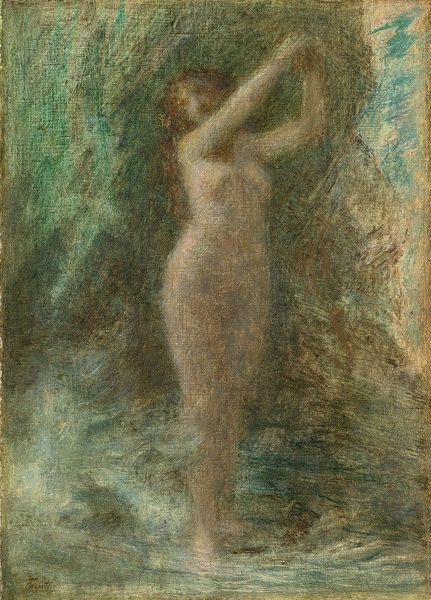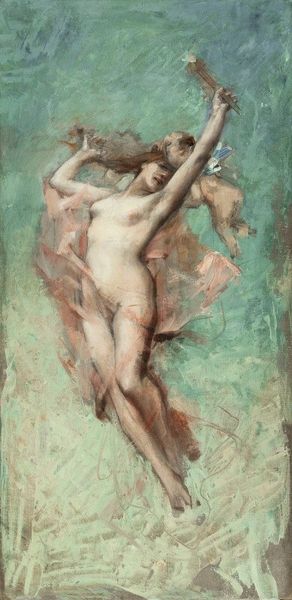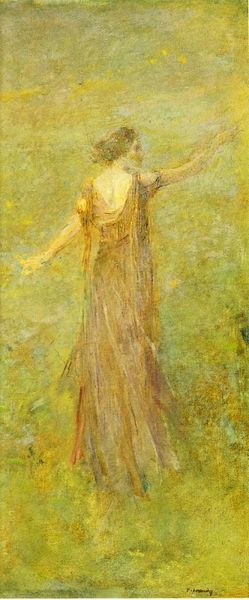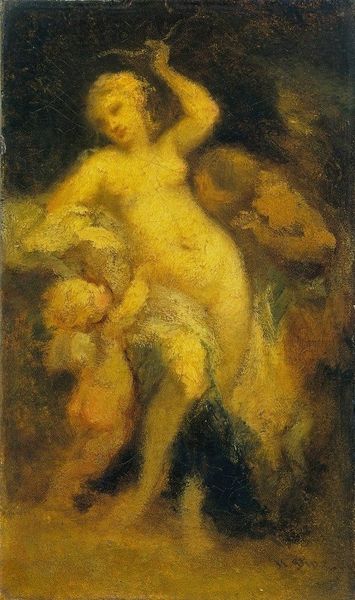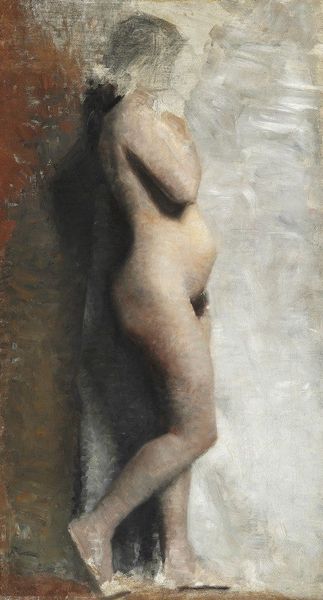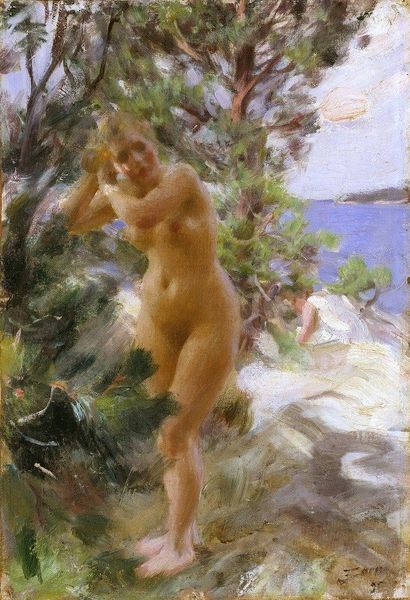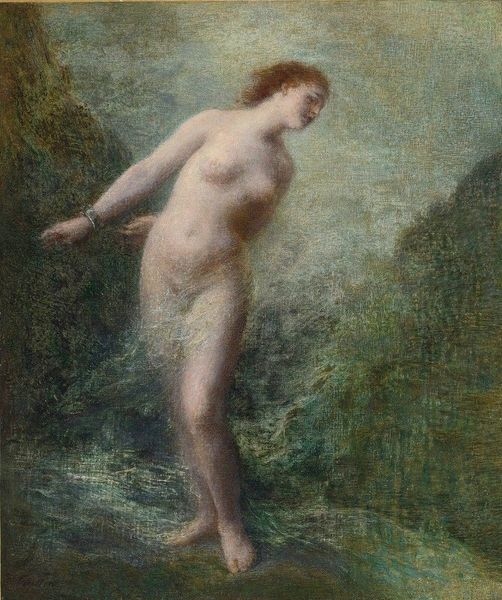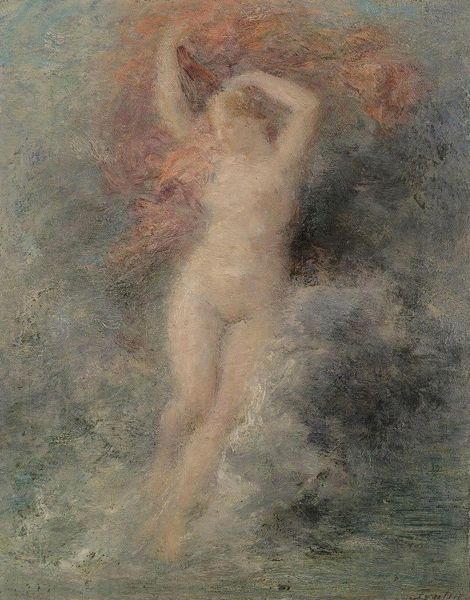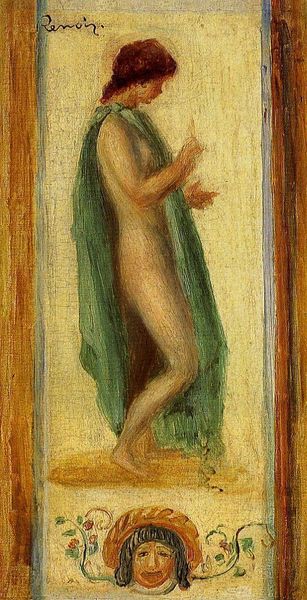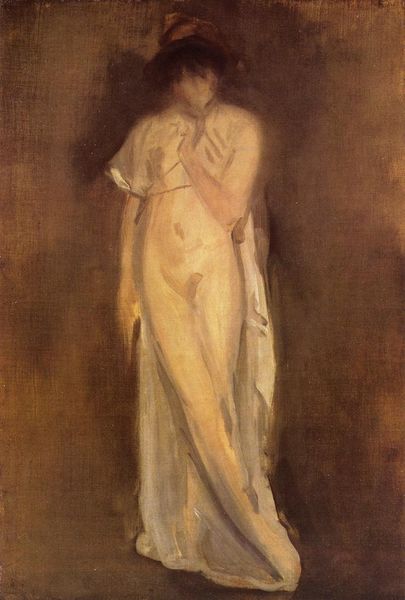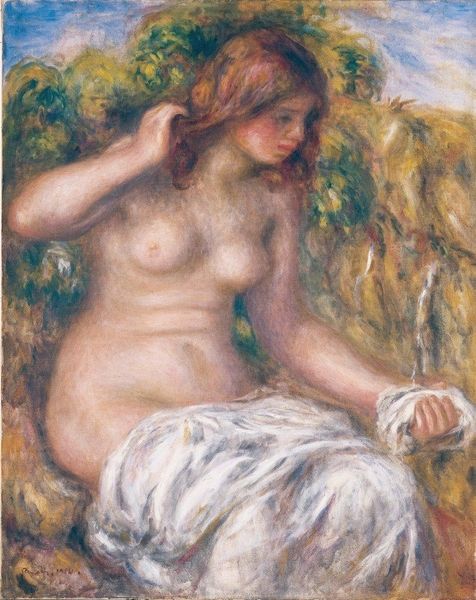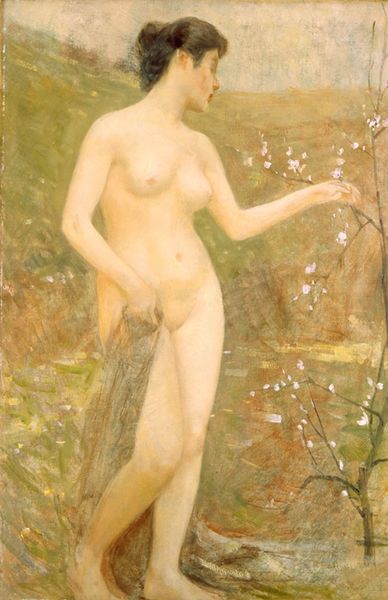
Copyright: Public Domain: Artvee
Art Historian: Here we have Pascal-Adolphe-Jean Dagnan-Bouveret's “La Peinture,” an oil on canvas completed around 1890. Art Historian: It feels…unfinished, almost like a faded memory. The figure is striking but soft, and the tones are so warm. There's an ethereal quality to the way she's presented against that almost ghostly landscape. Art Historian: Absolutely. Dagnan-Bouveret was working in an era when artists were wrestling with the academic tradition and the burgeoning avant-garde. This piece feels like it straddles both worlds. The nude figure and classical architecture suggest a reverence for historical painting. Art Historian: The pose evokes a muse or even an allegorical representation of painting itself, wouldn’t you say? The hand touching the head in a gesture of inspiration is a familiar trope, a direct line to centuries of artistic symbolism. I can't help but wonder what that disc-like object she holds in her left hand signifies, though. Perhaps a palette? Art Historian: Perhaps. Dagnan-Bouveret was celebrated in his time for his precise realism, yet this canvas is surprisingly impressionistic. It reminds me of some of Puvis de Chavannes' allegorical works in its monumental yet dreamlike presentation. He would have exhibited in the Salons of the period, spaces controlled by very rigid and established taste. So, there's a fascinating dialogue at play here, between innovation and expectation. Art Historian: And what does it say about the public’s expectation? That to present ‘painting’ required invoking idealized form, a nod to classicism even amidst the burgeoning modernist trends? Art Historian: Precisely. Even as realism took hold, there was still pressure—and indeed funding available through government channels—to make the themes elevated, connected to perceived past glories and to maintain a sort of didactic function. This work acknowledges the visual codes recognized by the Salon-going public while also hinting at what would come. Art Historian: Ultimately, she whispers of tradition and teases at the dawn of something new. There's an almost vulnerable beauty here. Art Historian: Yes, indeed. It is this negotiation, this straddling of worlds, which encapsulates art history at this moment, now frozen on this canvas for us to unravel.
Comments
No comments
Be the first to comment and join the conversation on the ultimate creative platform.
